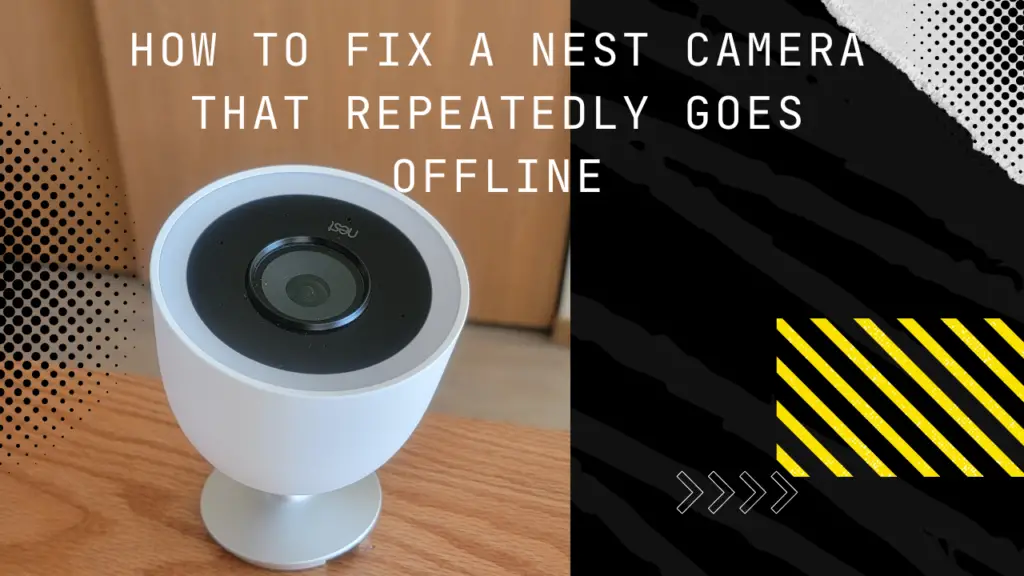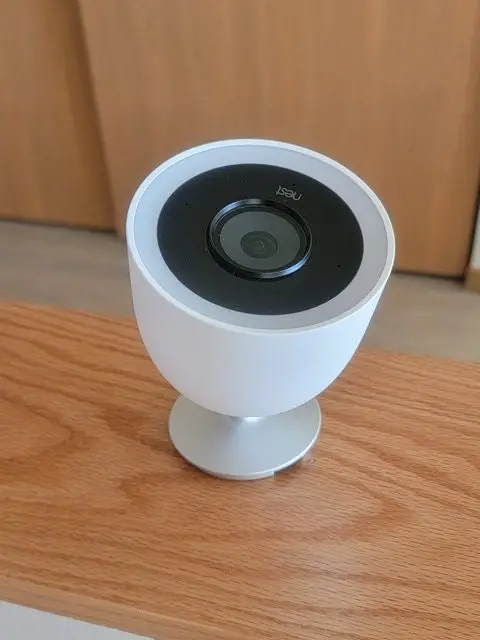
Google Nest is a home security system that utilizes a simple indoor camera to keep homeowners aware of potential intruders.
It’s also a helpful tool that allows users to monitor pets and children while away from home. But Nest cameras can occasionally malfunction.
Here are tips on how you can fix a Nest camera that repeatedly goes offline:
- Restart the Nest camera network.
- Check your Nest camera’s power connections.
- Update your Nest app to the most current version.
- Scan your Nest camera to check its temperature.
- Ensure your WiFi router is plugged in.
- Move your WiFi router closer to the Nest camera.
- Purchase a more powerful WiFi router.
- Review your household’s bandwidth usage.
One of the most common issues that Nest owners experience is a camera that repeatedly goes offline.
This guide will explore the steps residents can take to solve this issue and prevent it from happening again.
1. Restart the Nest Camera Network
The now-infamous IT advice, “try turning it off and on again,” may end up being the most straightforward and fastest solution to a Nest camera that keeps going offline.
That’s because your Nest camera occasionally receives software updates that require a complete restart or reset.
To reset your Nest Camera, press and hold the reset button located on the back of the camera.
Keep the button depressed for five seconds and release it.
Your Nest camera will restart itself, hopefully solving your connectivity issue.
Of course, if this solution doesn’t end up helping, your next step should be to check the camera’s power cables to ensure they’re connected to a working outlet.
2. Check Your Nest Camera’s Power Connections
If your Nest camera isn’t securely plugged into a power source, you’ll likely find that it consistently powers off or disconnects from your home’s WiFi signal.
Take a look at the device’s power cable and USB connection.
If the power cable plug isn’t flush with the outlet (or the USB connector is slightly detached from the camera), you may have found the culprit behind your Nest camera connectivity problems.
3. Scan Your Nest Camera To Check Its Temperature
Like many other electronic devices, a Nest camera can become inoperable when exposed to extreme temperatures.
For example, if your Nest camera is located near an HVAC vent, or you’re using a Nest Doorbell camera, it may be going offline due to unsuitable temperature changes.
Generally, a Google Nest camera can operate within a temperature range of about 0℉ to 100℉ (-18℃ to 38℃).
Still, finding out just how warm or cold your device is can be challenging.
One of the most recommended places to install a Nest camera is high up against a wall, facing the main entryway.
Climbing a ladder to reach your camera can be risky, but there’s another way to gauge your device’s temperature. Using an infrared temperature scanner helps you avoid awkward ladders and time-consuming temperature checks.
To do this, you only need to turn on the scanner, point it at your camera, and read the display.
You’ll get an accurate reading of its temperature in a matter of seconds.
Naturally, if your camera is too cold or hot, you should relocate it to a more temperate area.
4. Ensure Your WiFi Router Is Plugged In
If your Nest camera is fully updated, plugged in, and kept safe from extreme temperatures, then your camera may not be responsible for the wavering internet connection.
In this case, check your WiFi router for power supply problems.
Fortunately, most homeowners will know right away when their home WiFi router is experiencing problems or isn’t plugged in.
However, it’s still a good idea to ensure that your router is fully connected to a working outlet before attempting further solutions.
5. Move Your WiFi Router Closer to the Nest Camera
Is your WiFi router plugged in and working correctly?
If so, the issue behind your Nest camera connectivity issues might be distance.
Remember, WiFi routers have a set broadcast distance, and devices far from a router can fail to receive its signal.
Placing your router closer to your Nest camera could help keep the device connected, preventing further offline notifications.
Still, this might not be possible, especially if your modem is restricted to a single connection line.
If you can’t move your router closer to your Nest camera, the next best option is purchasing a new and more powerful WiFi router.
Upgrading your router to one that offers a greater range is an excellent way to boost internet connectivity throughout your whole home and keep your Nest devices online.
6. Purchase a More Powerful WiFi Router
The average WiFi router can last several years before beginning to degrade and break down, but that doesn’t mean you should wait to replace your current WiFi router.
A few years ago, a router that could achieve speeds of about 2 Gbps was considered impressive.
But now, as WiFi 6 is set to become the new norm, routers can potentially reach speeds of almost 10 Gbps!
If you can’t remember when you purchased your most recent router, or it’s been more than three years since you bought it, it’s likely time to replace it.
Doing so could help increase the distance of your home’s WiFi signal, keeping all of your devices connected and functional.
7. Review Your Household’s Bandwidth Usage

If your household is full of devices that remain connected to your WiFi throughout the day, you may end up reaching your internet data cap far sooner than expected.
After this point, internet speeds may significantly decline, causing your Nest camera to go offline repeatedly.
One of the easiest ways to gauge your current bandwidth speeds is to use a free bandwidth speed test.
This will reveal your average download and upload speeds.
If your results show a download speed of fewer than 25 Mbps and an upload speed of fewer than 3 Mbps, you may be experiencing the consequences of going over your monthly data cap.
You’ll likely need to upgrade your internet plan to one that offers a higher data cap to solve this issue.
But, of course, you could also decide to disconnect or turn off devices around your home.
For example, HD streaming services tend to consume a large amount of data, typically about 1GB per hour.
So, if you tend to leave Netflix, Hulu, or other streaming video services running while you’re out of the house or sleeping, you may want to work on changing those habits.
Doing so could help you conserve a massive amount of internet bandwidth.
Key Takeaways
When a Google Nest camera repeatedly turns off, it’s likely experiencing a problem connecting to a power source or suitable WiFi signal.
Checking that your Nest camera is plugged into its power adapter is an excellent first step.
Users may also need to:
- Make sure their camera isn’t too hot or cold.
- Place their WiFi router closer to their Nest camera.
- Purchase a more powerful WiFi router.
- Double-check their household’s bandwidth usage.

